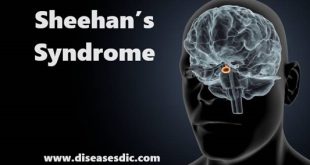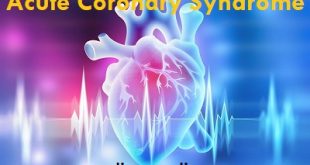Definition
Acute pancreatitis refers to an acute inflammatory process of the pancreas, usually accompanied by abdominal pain and elevations of serum pancreatic enzymes. This syndrome is usually a discrete episode, which may cause varying degrees of injury to the pancreas and adjacent and distant organs. The incidence of acute pancreatitis has wide variability within populations, with about 1–5 cases per 10,000 population per year. Eighty percent of the cases in the United States are related to alcohol use or biliary stones.
Pancreatitis may be classified as mild, moderate, or severe based on physiological findings, laboratory values, and radiological imaging. Mild disease is not associated with complications or organ dysfunction and recovery is uneventful. In contrast, severe pancreatitis is characterized by pancreatic dysfunction, local and systemic complications, and complicated recovery.
In addition, pancreatitis may be further classified into acute interstitial and acute hemorrhagic disease. In the first type, the gland architecture is preserved but is edematous. Inflammatory cells and interstitial edema are prominent within the parenchyma. Hemorrhagic disease is characterized by marked necrosis, hemorrhage of the tissue, and fat necrosis. There is marked pancreatic necrosis along with vascular inflammation and thrombosis.
Acute pancreatitis pathophysiology
The two types of acute pancreatitis are mild and severe, which are defined based on whether the predominant response to cell injury is inflammation (mild) or necrosis (severe). In mild pancreatitis, there is inflammation and edema of the pancreas. In severe pancreatitis, there is necrosis of the pancreas, and nearby organs may become injured.
As part of the initial injury, there is an extensive inflammatory response due to pancreatic cells synthesizing and secreting inflammatory mediators: primarily TNF-alpha and IL-1. A hallmark of acute pancreatitis is a manifestation of the inflammatory response, namely the recruitment of neutrophils to the pancreas. The inflammatory response leads to the secondary manifestations of pancreatitis: hypovolemia from capillary permeability, acute respiratory distress syndrome, disseminated intravascular coagulation, renal failure, cardiovascular failure, and gastrointestinal hemorrhage.
Prevalence
Worldwide, the incidence of acute pancreatitis ranges between 5 and 80 per 100,000 population, with the highest incidence recorded in the United States and Finland. In Luneburg, Germany, the incidence is 17.5 cases per 100,000 people. In Finland, the incidence is 73.4 cases per 100,000 people.
Causes
Most cases of acute pancreatitis are closely linked to gallstones or to alcohol consumption, although the exact cause isn’t always clear.
Gallstones
- Gallstones are hard pieces of stone-like material that form in your gallbladder. They can trigger acute pancreatitis if they move out of the gallbladder and block the opening of the pancreas.
- The blockage can disrupt some of the enzymes (chemicals) produced by the pancreas. These enzymes are normally used to help digest food in your intestines, but they can start to digest the pancreas instead if the opening is blocked.
- However, not everyone with gallstones will develop acute pancreatitis. Most gallstones don’t cause any problems.
Alcohol consumption
- It’s not fully understood how alcohol causes the pancreas to become inflamed. One theory is that it interferes with the normal workings of the pancreas, causing the enzymes to start digesting it.
- Whatever the cause, there is a clear link between alcohol use and acute pancreatitis. A very large study found that people who regularly drank more than 35 units of alcohol a week were 4 times more likely to develop acute pancreatitis than people who never drank alcohol (35 units is the equivalent of drinking around 16 cans of strong lager or 4 bottles of wine a week).
- Binge drinking, which is drinking a lot of alcohol in a short period of time, is also thought to increase your risk of developing acute pancreatitis.
Other causes
Less common causes of acute pancreatitis include:
- Accidental damage or injury to the pancreas – for example, during a procedure to remove gallstones or examine the pancreas
- Certain types of medication, such as some antibiotics or chemotherapy medication – acute pancreatitis can be an unexpected side effect of these in a small number of people
- A viral infection – such as mumps or measles
- A complication of cystic fibrosis
- Certain rare conditions – including hyperparathyroidism, Reye’s syndrome and Kawasaki disease
Complications of Acute pancreatitis
The main complications of acute pancreatitis are
A pancreatic pseudocyst is a collection of fluid containing pancreatic enzymes that forms in and around the pancreas. The pseudocyst goes away spontaneously in some people. In other people, the pseudocyst does not go away and can become infected.
Necrotizing pancreatitis may occur in severe acute pancreatitis. In necrotizing pancreatitis, parts of the pancreas may die, and body fluid may escape into the abdominal cavity, which decreases blood volume and results in a large drop in blood pressure, possibly causing shock and organ failure. Severe acute pancreatitis can be life threatening.
Infection of an inflamed pancreas is a risk, particularly in people who have necrotizing pancreatitis. Sometimes, a doctor suspects an infection when a person’s condition worsens and a fever develops, especially if this happens after the person’s first symptoms started to subside.
Organ failure can occur in acute pancreatitis because damage to the pancreas may permit activated enzymes and toxins such as cytokines to enter the bloodstream and cause low blood pressure and damage to other organs such as the lungs and kidneys. This damage can cause some people who have acute pancreatitis to develop failure of other organs, including the kidneys, lungs, or heart, and this failure can lead to death.
Acute pancreatitis risk factors
The risk factor is as follows:
- Middle-aged
- Gallstones
- Alcohol
- Hypertriglyceridemia
- Medications such as Azathioprine, Thiazide diuretics, and Furosemide
- HIV/AIDS
- Endoscopic retrograde cholangiopancreatography
- Trauma
- SLE
- Sjogren’s syndrome
Acute pancreatitis symptoms
The main symptom of acute pancreatitis is a severe pain that develops suddenly in the center of your tummy.
This aching pain often gets steadily worse and can travel along your back.
Other symptoms of acute pancreatitis include:
- Feeling or being sick (vomiting)
- Diarrhea
- indigestion
- A high temperature of 38C or more (fever)
- Yellowing of the skin and eyes (jaundice)
- Tenderness or swelling of the tummy
- Fast heartbeat (tachycardia)
Eating or drinking may make you feel worse very quickly, especially if you eat fatty foods.
Leaning forward or curling into a ball may help to relieve the pain but lying flat on your back often makes it worse.
Acute pancreatitis caused by gallstones usually develops after eating a large meal. If the condition is caused by alcohol, the pain often develops 6 to 12 hours after drinking an excessive amount of alcohol.
Diagnosis and tests
Acute pancreatitis is confirmed by medical history, physical examination, and typically a blood test (amylase or lipase) for digestive enzymes of the pancreas. Blood amylase or lipase levels are typically elevated 3 times the normal level during acute pancreatitis. In some cases when the blood tests are not elevated and the diagnosis is still in question, abdominal imaging, such as a computed tomography (CT) scan, might be performed.
Testing
After a diagnosis is confirmed, certain imaging tests might be performed during hospitalization or after to help identify the cause. Such tests include:
Transabdominal ultrasound
This is commonly performed during hospitalization to specifically evaluate the gallbladder for stones because gallstones are the most common cause of acute pancreatitis. Ultrasound uses sound waves that bounce off the pancreas, gallbladder, liver, and other organs, and their echoes generate electrical impulses that create an image—called a sonogram—on a video monitor. If gallstones are causing inflammation, the sound waves will also bounce off of them, showing their location.
Endoscopic ultrasound (EUS)
This test is not commonly required during acute pancreatitis. Compared to transabdominal ultrasound, it is relatively more invasive, in that a physician passes a flexible thin tube down into the stomach. A camera and ultrasound probe are attached to the end of the tube, which enables the physician to look at images of the gallbladder, pancreas, and liver. The images are more sensitive than those of transabdominal ultrasound in detecting small stones in the gallbladder and bile ducts that may have been missed. It can also visualize the pancreas for abnormalities. To read more about this, please click here.
Magnetic resonance cholangiopancreatography (MRCP)
MRCP uses magnetic resonance imaging (MRI), a noninvasive procedure that produces cross-section images of parts of the body. After being lightly sedated, the patient lies in a cylinder-like tube. The technician injects dye into the patient’s veins, which helps show the pancreas, gallbladder, and pancreatic and bile ducts. This is another sensitive test for evaluating the gallbladder, bile ducts, and pancreas for causes of acute pancreatitis.
Computerized tomography (CT)
A CT scan is a noninvasive radiograph (x-ray) that produces 3-dimensional images of parts of the body. The patient lies on a table that slides into a donut-shaped machine. Typically, not performed initially for an episode of acute pancreatitis, it may be performed when a diagnosis is uncertain or several days into hospitalization to evaluate the extent of pancreatic damage when a patient is not recovering as quickly as expected.
Treatment of Acute pancreatitis
Treatment for acute pancreatitis will depend on whether it is mild or serious. In mild cases, the risk of complications is small. In serious cases, the risk is significant.
Treatment for mild acute pancreatitis
Treatment aims to maintain bodily function and ease symptoms while the pancreas is repairing itself.
This will include:
Painkillers: Mild acute pancreatitis can be moderately or severely painful.
Nasogastric tubes: A tube may remove excess liquids and air as a treatment for nausea and vomiting.
Bowel rest: The gastrointestinal tract will need to rest for a few days, so the person will not take any food or drink by mouth until their condition improves.
Preventing dehydration: Dehydration often accompanies pancreatitis, and it can worsen the symptoms and complications. The fluid is often provided intravenously for the first 24-48 hours.
The person can usually go home after about 5 to 7 days.
Treatment for severe acute pancreatitis
In severe acute pancreatitis, there is usually some tissue death or necrosis. This increases the risk of sepsis, a severe bacterial infection that can affect the whole body. Sepsis can lead to multi-organ damage or failure.
Severe acute pancreatitis can also cause hypovolemic shock. Severe blood and fluid loss can leave the heart unable to pump enough blood to the body. Parts of the body can become rapidly oxygen-deprived. This is a life-threatening situation.
Treatment for this kind of pancreatitis includes
Treatment in the intensive care unit (ICU): Injections with antibiotics aim to stop any infection from developing in the dead tissue.
Intravenous fluids: These helps maintain hydration and prevent hypovolemic shock.
Breathing assistance: Ventilation equipment will help the patient breathe.
Feeding tubes: These provide nutrition as appropriate. In this case, early feeding improves outcomes.
Surgery: In some cases, the dead tissue may need to be surgically removed.
The patient will stay in ICU until they are no longer at risk of organ failure, hypovolemic shock, and sepsis.
Treating gallstones
If gallstones caused acute pancreatitis, the patient might undergo surgery or an endoscopic retrograde cholangiopancreatography (ERCP) after their condition improves.
After the gallstones are removed, the patient may be advised to follow a special diet to lower blood cholesterol, because excess cholesterol encourages the growth of gallstones.
The American Gastroenterological Association recommends surgery to remove the gallbladder of any patient who develops pancreatitis from gallstones.
Treating alcohol misuse
If doctors determine that alcohol misuse was the underlying cause of acute pancreatitis, the patient may be offered a treatment program for alcohol misuse.
Acute pancreatitis prevention
As acute pancreatitis is often caused by gallstones and alcohol consumption, a healthy lifestyle can reduce your chances of developing the condition.
Gallstones
The most effective way of preventing gallstones is by eating a healthy low-fat diet that includes plenty of fresh fruit and vegetables (at least five portions a day). Your diet should also include whole grains, which are found in wholemeal bread, oats and brown rice. This will help lower the amount of cholesterol in your body.
Being overweight also increases your chances of developing gallstones, so maintaining a healthy weight by eating a balanced diet and taking plenty of regular exercises can also help reduce your risk of developing conditions.
Alcohol
Limiting the amount of alcohol, you drink can help prevent your pancreas from being damaged and reduce your risk of developing acute pancreatitis. It can also lower your chances of developing other serious conditions, such as liver cancer.
It is recommended that men should not drink more than 3-4 units of alcohol a day and women should not drink more than 2-3 units a day. A unit of alcohol is equal to about half a pint of normal strength lager, a small glass of wine or a pub measure (25ml) of spirits.
 Diseases Treatments Dictionary This is complete solution to read all diseases treatments Which covers Prevention, Causes, Symptoms, Medical Terms, Drugs, Prescription, Natural Remedies with cures and Treatments. Most of the common diseases were listed in names, split with categories.
Diseases Treatments Dictionary This is complete solution to read all diseases treatments Which covers Prevention, Causes, Symptoms, Medical Terms, Drugs, Prescription, Natural Remedies with cures and Treatments. Most of the common diseases were listed in names, split with categories.








I highly appreciate the warning against alcohol consumption that you gave. It’s causing a lot of health problems for people. Thanks for knowledge sharing.I am from Sierra Leone in West Africa.
this was a great topic on your pancreas I’ve been having difficulty with mine but hadn’t been diagnosed with pancreatitis however my understanding of this as for as medically, it was very informative.
can damage pancreas be healed completely after quit drinking alcohol?
People who quit drinking are more likely to have only mild or occasional pain but not cured completely.
sab acute pancreatitis asitis pleace medicine batey